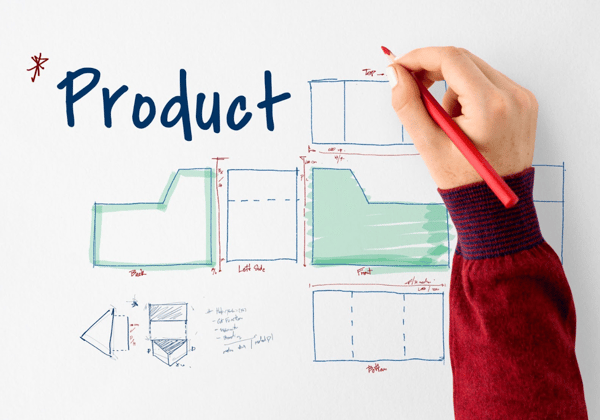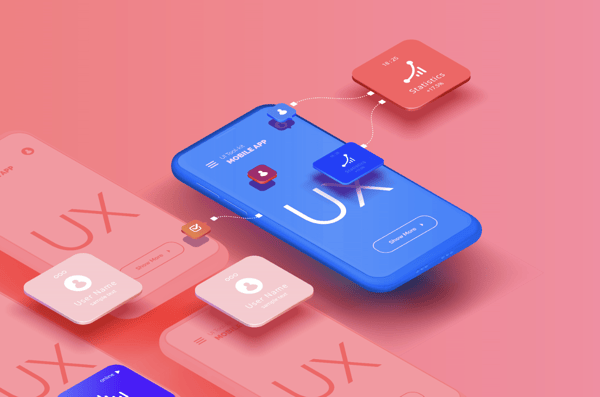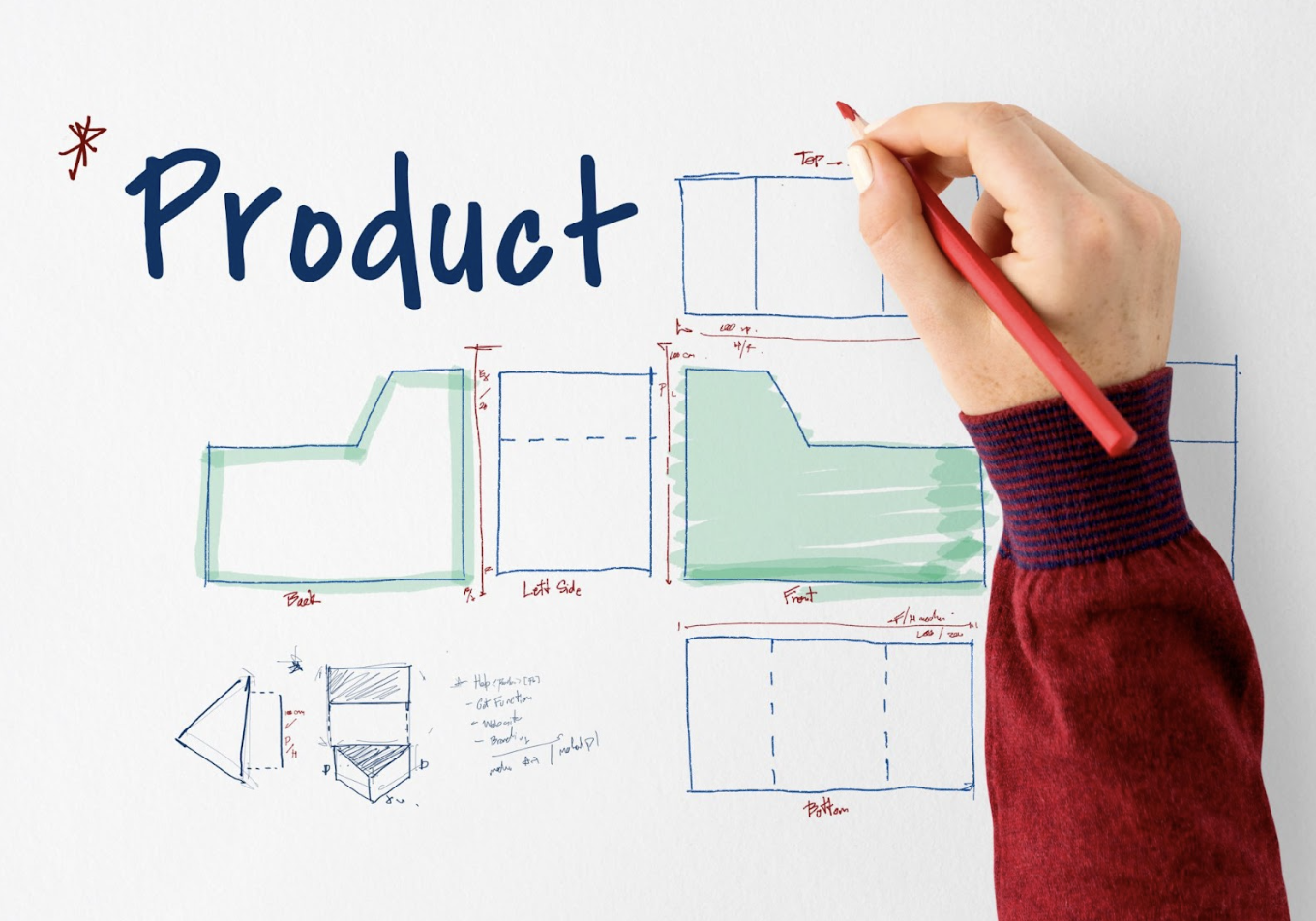Product design means finding good ideas in the market, figuring out problems, making solutions that work, and checking with customers to make sure they like it. It's really important for creating new products in a smart way.
All You Need to Know about Product Design
What is Product Design?
Product design is the framework of recognizing a market opportunity, defining the problem coherently, proposing and devising an adequate solution to the problem, and subsequently validating it with users in real-time.
The concept of product design is vast and diverse. It focuses on the resourceful introduction and development of concepts using a design process that translates to the creation of new products. It constitutes an integral part of product development.

What is the History of Product Design?
In the past decades, when mass-production in manufacturing was not so common, skilled artisans crafted products mainly by hand. This led to higher prices with a limited supply of products. The advent of industrialization, however, brought about a drastic change where mass quantities were produced in a cost-effective manner.
As products became accessible, manufacturers aimed to sell their products to the masses in the market. Producers sought the assistance of industrial designers to craft products that delighted the eye and were suitably functional.
Through the passage of time, the concept of ‘product design’ emerged as a branch of industrial design. Today, industrial design comprises physical objects such as household appliances and furniture. On the other hand, product design is a more dynamic concept comprising even virtual and digital products.
Another relevant and important concept to product design is product positioning. Product positioning will not only guide you in designing your product but also marketing it properly once the product is developed.
What are the Types of Product Design Jobs Available?
There are a variety of product design jobs available in the market. Below is a list of possible options that product designers can choose from.
-
UX designer
User-experience and interaction designers craft and refine products by conducting research into user behavior. This research provides insights about which products will provide the most satisfaction to users. Their aim is to not just create functional but delightful experiences for their users.
-
Graphic designer
Graphic designing is one of the most artistic job opportunities available in product design. It is all about shaping the visuals. From graphics and icons to logos and visual elements of product experience, graphic designers craft the product’s essence. There are contrasting aspects to graphic designing, from picking broad color schemes to intricate individual pixels.
-
Motion/animation designer
A motion/animation designer works towards the moving elements of the product experience. From user-controlled avatars to slick transitions, the job of a motion designer conjures the magic of movement. They may not birth the art, but ultimately bring life to it.
-
User research
As the name suggests, the user research job focuses largely on understanding and comprehending customers. They engage in interviews, conduct usability studies, and unveil prototypes and mockups for invaluable product feedback. Crafting demographics and personas is also within their domain.
In order to make research consumer-oriented, it is necessary to learn about MVP. The concept of Minimum Viable Products (MVPs) can supercharge your product design journey, helping you deliver value to your users faster and more efficiently.
-
Data analyst
The job of data analysts is to concentrate on rigorous user research to recognize strategies for improving the products' features, layout, and visual aesthetics. Data analysts wear the hat of both, a scientist and a designer.
-
Prototyper
Prototypes are the architectures of tangibility in the product design team. They assist the organization in validating the product’s characteristics with their users. When tangible products are made in a company, the job of a prototype is to hand-craft mockups. In the case of digital products, their job is to craft virtual mockups and wireframes.
What Does the Product Design Process Look Like?
While the specifics of the product design process differ from company to company, there is a rather similar design thinking philosophy employed by most of them.
There are multiple steps involved in an ideal product design process.
It is also significant to note that designers are not expected to navigate the framework in a linear approach. You can always repeat a previous step or refine it based on the results.
The interesting concept is that the product design process never comes to a halt, even once a product has matured. This is primarily due to evolving technologies and changing customer interactions with the product.
For several years, phone-friendly websites and mobile apps lacked the capabilities and user experience that could be achieved using a computer. This is why product designers are expected to remain continually at par with the evolving patterns of usage. They have to bring greater functionality and convenience to the smaller screen and mirror their users’ real-world preferences.
Product designers should incorporate the following strategies to deliver a seamless and delightful user experience on a condensed screen size.
Empathizing with people
Product designers need profound insights into their user base. This can be achieved through profound research into the world of those they design for.
Defining the problem
The next step is to develop a point-of-view which is influenced largely by user insights and needs.
Ideating a solution
It is significant to unleash the team’s creativity through brainstorming. Design teams should come up with a variety of likely solutions, explore boundless possibilities, and enjoy unrestricted ideation.
Building a prototype
After ideation, the team should work towards developing a prototype to test the hypothesis. A prototype allows designers to evaluate whether they are following the right path. It also ignites fresh insights that might otherwise remain undiscovered.
Testing the solution
Circle back to your users and invite their valuable feedback.
Lean Product Design
The concept of lean product design emphasizes ensuring that innovative products make their way to the market swiftly. While Lean and Agile are prominent software development strategies, ‘lean product design’ ushers in rapid iterations to the pre-coding phase of the product development cycle.
The process recognizes a product’s differentiators and its key value proposition. It further launches a limited yet completely functional product to promptly initiate the feedback loop, bring in sales, or attract prospective customers. This process is the catalyst for establishing and quantifying product-market fit.
Key Points to Remember in Product Development
1. The process should be adaptable and flexible to fit the project.
When working in the field of product design, the concept of one-size-fits-all does not quite work. The product development cycle should be customized and adapted to suit the distinctive functional and business needs of that particular project.
The following factors should be kept in mind while opting for the design process:
-
Consumer preferences and demands
-
The deadline to complete the project
-
The overall budget of the project
In short, the process should be morphed to the users’ preferences and business capabilities. Once you are done, choose what works best for your project, eliminate other ideas, and gradually develop your design process.
2. The process of product design is not linear.
Contrary to the popular opinion of most product teams, product design is NOT a linear process. The process phases often intermingle with one another, and there are numerous back-and-forth movements. As the teams delve deeper into finding solutions, revisiting research or exploring fresh design concepts may become essential. It's an iterative, dynamic process.
3. The process is never-ending.
Digital product design has never been a one-shot deal compared to other design methods.
There is a key tip for designers here: never assume that everything will be perfect from the outset. You will most often unveil design gaps during the implementation stage. For example: a flawed assumption about product usage prior to product deployment.
The process works chiefly on the principle of continuous improvement. The design should evolve in repeated cycles. Iterative design focuses on fine-tuning and elevating the product on the basis of data feedback from the users. It offers a wonderful opportunity for designers to enrich their work based on user insights, and make it more valuable for users.
It is relevant here to learn about the product backlog because a well-managed product backlog complements your product design process, ensuring a seamless journey from concept to reality.
Frequently Asked Questions
Is UI/UX the same as product design?

UI/UX design is a subset of product design. UI (User Interface) and UX (User Experience) design focus on the visual and interactive aspects of a product. Product design encompasses a broader spectrum, involving the entire process of conceiving, developing, and bringing a product to market, including its functionality, aesthetics, and user experience.
What are product design examples?
Product design examples encompass a wide range of consumer and industrial goods, from smartphones and furniture to kitchen appliances and automobiles. These designs integrate functionality, aesthetics, and user experience to create innovative and user-friendly products that meet market needs and desires while considering factors like materials, ergonomics, and sustainability.
What are the 4 stages of product design?
The four stages of product design typically include:
-
Research and Analysis: Gathering insights into user needs and market trends.
-
Concept Development: Generating ideas and concepts for the product.
-
Design and Prototyping: Creating detailed designs and prototypes.
-
Testing and Refinement: Evaluating prototypes, gathering feedback, and refining the product design before production.
How can I become a product designer?
To become a product designer, follow these steps:
-
Acquire relevant education, such as a bachelor's degree in industrial design, graphic design, or a related field.
-
Build a strong portfolio showcasing design projects.
-
Gain practical experience through internships or entry-level positions.
-
Develop proficiency in design software.
-
Network within the design industry to find job opportunities and mentors.
-
Continuously learn and stay updated on design trends and technologies.
Learn more about product design with our content. Harvestr is your all-in-one management platform, fostering collaboration and innovation for your teams to deliver a more impactful end product.
